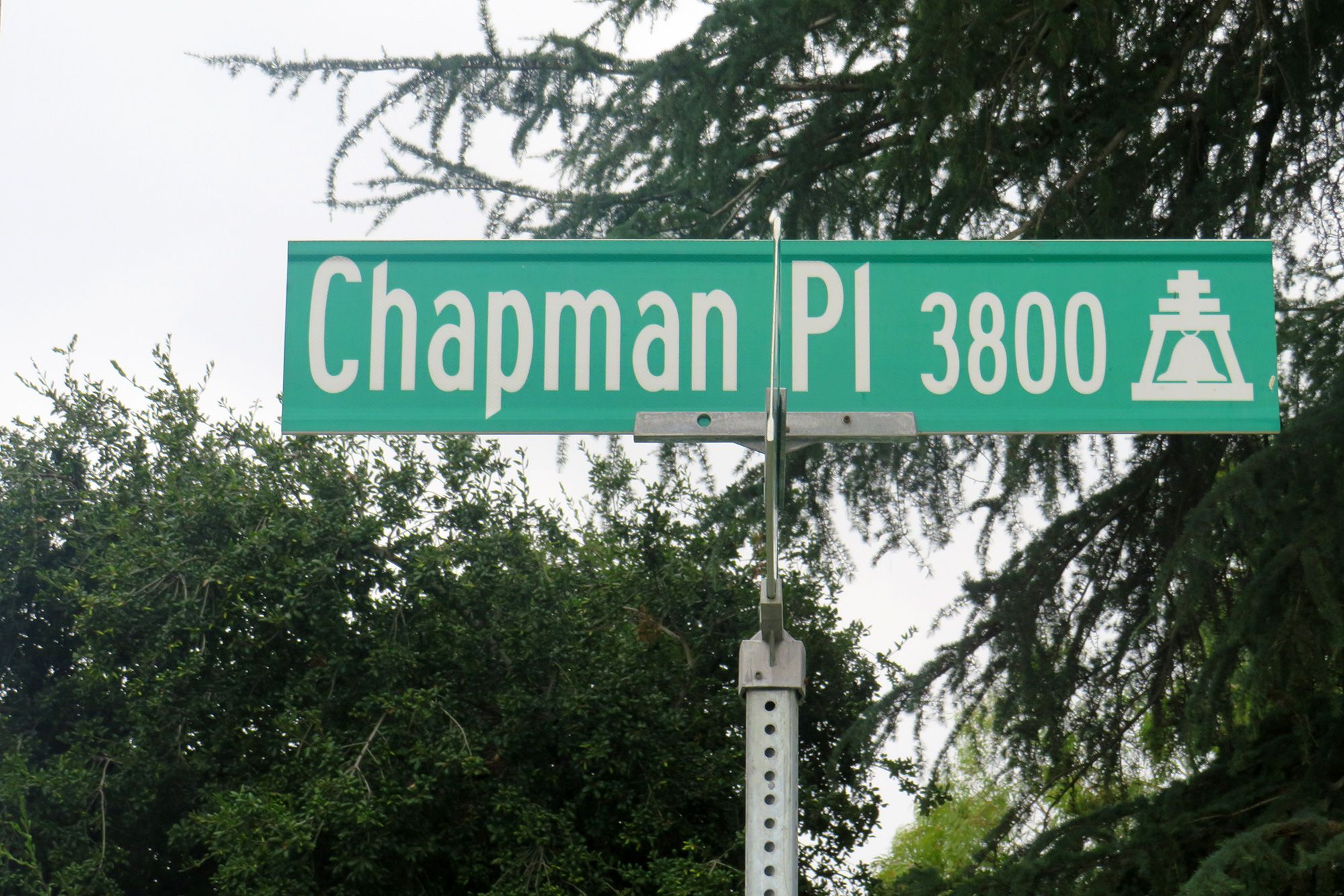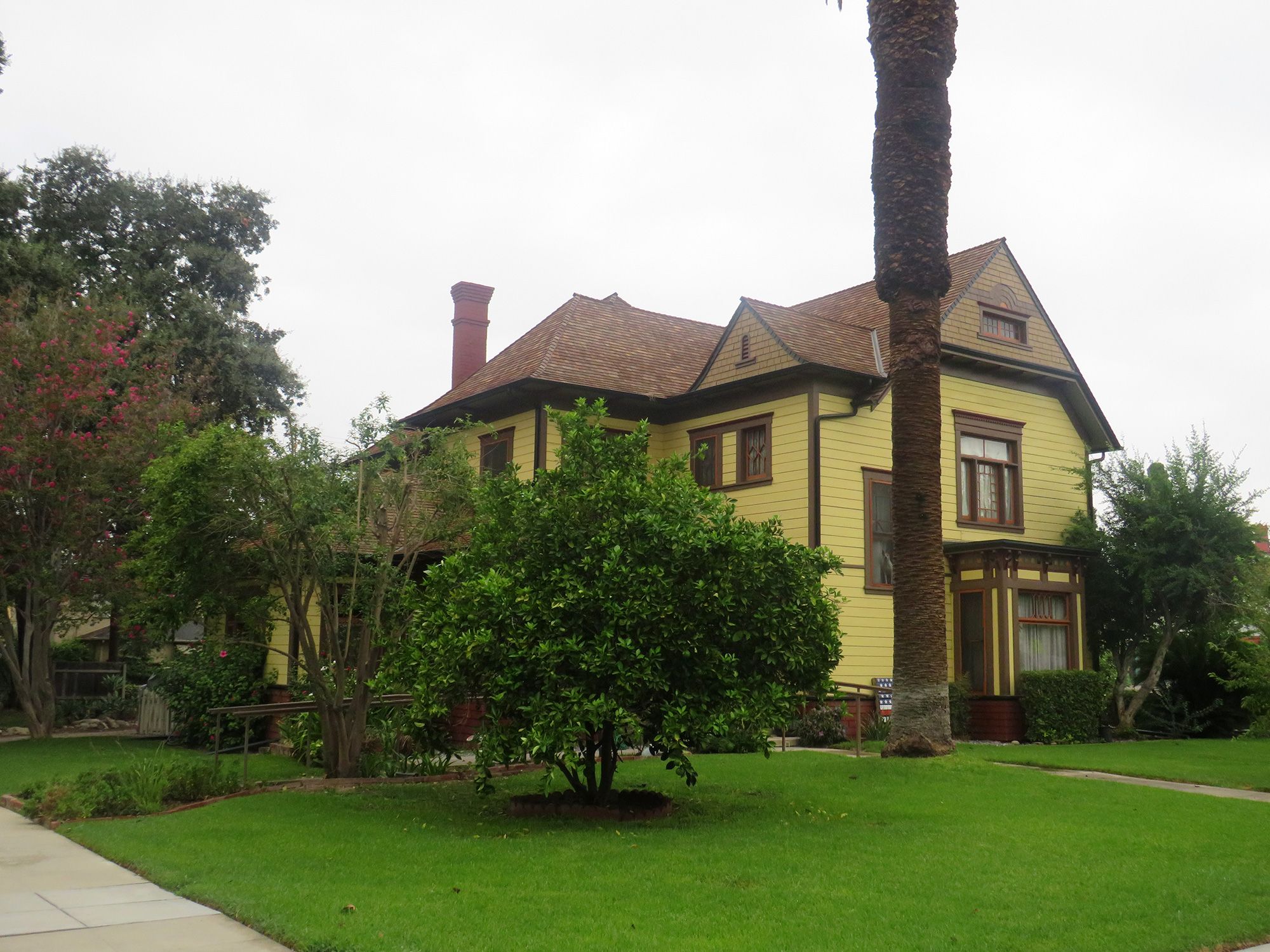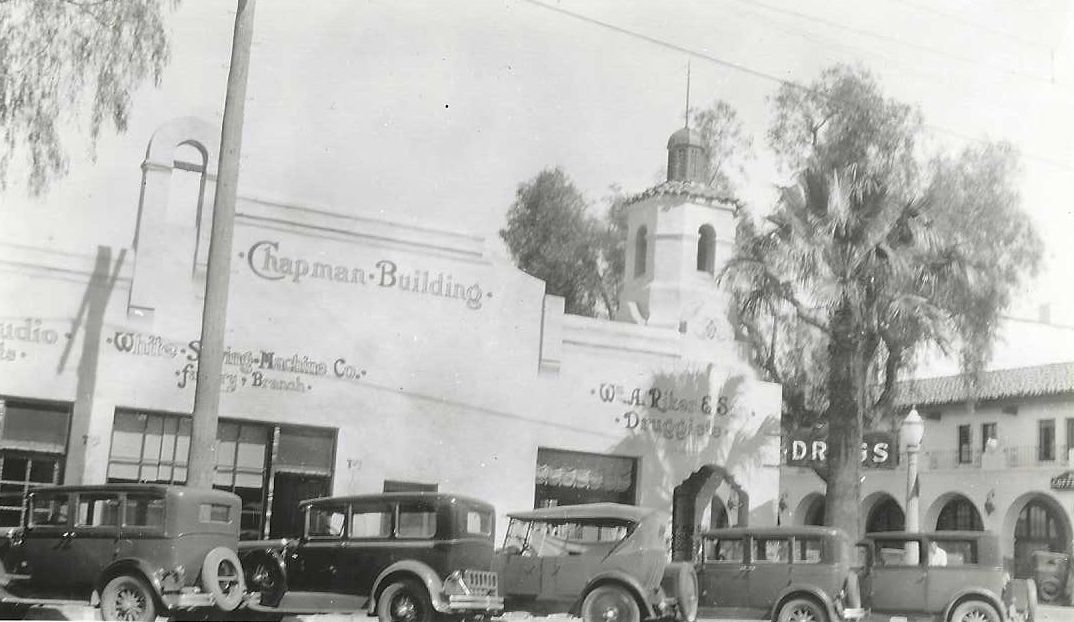Sweet Fridays: Meals on Wheels and Riverside Cookie Shoppe Hit 100,000-Cookie Milestone
Partnership between nonprofit and bakery brings weekly joy to homebound seniors, with volunteers reporting "tears of joy" on cookie delivery days.
Uncovering the Chapman Legacy, from Orange Groves to a Street that Lights Up Every Christmas.

I love to dig into the background of old Riverside photos that I come across. So, when I found this 1929 photo by my favorite early Riverside photographer, E. N. Fairchild, I knew I needed to learn more about the building and the name behind it.
I soon discovered that the building was named in honor of Deloraine P. Chapman. What is his story?
Deloraine P. Chapman was born in Connecticut in 1836. He was a veteran of the Civil War, serving under General Grant, and was wounded twice. He arrived in Riverside in 1887 with his wife and five daughters (Louise, Emeline, Anna, Maud, and Mildred) and settled with his family at 257 Cypress Avenue (today 5081 Magnolia Avenue). In 1899, Chapman had the house expanded into a two-story structure.
Chapman was very active in the early citrus industry and well-known throughout the city. He had groves in several locations, including groves behind his house. For several years, he was president of the Pachappa Orange Growers’ Association, one of the oldest packing associations in Riverside. He owned for many years the Chapman building on Main Street between Eighth and Ninth. He was one of the founding members of Citizens National Trust & Savings Bank. In 1898, his name, along with that of his wife and his daughter Maude, appeared in a list of names opposing the introduction of a saloon into Riverside.
Tom Patterson, in his 1958 series of articles in the Daily Press entitled “The Day the Elephants Broke Loose,” reported that Chapman was in the courtyard of the Mission Inn reading a newspaper the day that Floto the elephant made his rampage through Riverside in 1908. Floto knocked Chapman down with his trunk but moved on when a shot was fired.
Chapman died on July 26, 1920, living in the same house on Magnolia, which was at the time of his death owned by one of his daughters and her husband, Horace and Maude Porter. Horace Porter was mayor of Riverside from 1918-1922, and before that, he was pastor at the First Congregational Church.
After Chapman died in 1920, his five daughters deeded a strip of land through his former orange grove for a street that became Chapman Place. A street is called a “Place” when it “has no throughway—or leads to a dead end.” Chapman Place extended from Magnolia into the Chapman groves but only about halfway to Brockton.

In 1941, George Pooley, who owned land next to the Chapmans, deeded property to the city to extend Chapman Place all the way to Brockton. On this new section of the street, Pooley hired contractor Dale Cunnison to build an eight-room, two-story residence at 3979 Chapman Place. Although no longer a cul-de-sac, the name Chapman Place stuck. Today, this one-block street is known for the many Christmas decorations and lights that are erected each year in front of many of the homes along this historic street.
The house at 5081 Magnolia on the corner of Magnolia and Chapman Place still stands today as one of the oldest houses on Magnolia Avenue.

Among the properties that Chapman owned was the southwest corner of Market and Seventh. In 1928, his five daughters announced that a remodeled building was to be erected on that corner and named the Chapman Building in honor of their late father. In July of that year, the newspaper reported that architect Henry L. A. Jekel had prepared plans for this structure located opposite the new West Cost Theater, already under construction. The journalist wrote:
A one-story structure embracing the mission style of architecture has been conceived by Jekel, in line with the general trend now strikingly exemplified in this locality. The structure will be of reinforced concrete, with striking lines and a high ornamental tower at the corner. (Riverside Daily Press, July 18, 1928).
By the beginning of September, building permits were issued for the Chapman building. Work progressed quickly, and on October 23, a highly ornamental copper dome made by the Acme Sheet Metal Works of Riverside was installed on the corner tower. At that point, the design of the building was described as “strictly Spanish.” Vince Moses and Cate Whitmore, in their excellent portrayal of the life and works of Jekel, aptly describe that “Jekel conceived a plan in picturesque, somewhat revere, Spanish Revival built of structural concrete.” (Henry L.A. Jekel: Architect of Easter Skyscrapers and the California Style, page 190).
Before the end of the year, the Chapman Building was ready for opening. A special four-page section in the Monday Evening, December 17, 1928, edition of the Riverside Daily Press proclaimed, “Chapman Building To Be Formally Opened Tuesday Night.” On the front page of the special section, article headlines read:
ARCHITECT’S DREAM BECOMES REPLICA OF STREET IN SPAIN
DAUGHTERS OF LOYAL RIVERSIDER HONOR MEMORY OF THEIR FATHER
STORES AND SHOPS COOPERATE IN PLAN FOR ENTERTAINMENT
Anchoring the corner of the new building under the picturesque tower was Wm. A. Riker & Son Drug Store. Next door along Market Street was the White Sewing Machine Company and then Terry’s Studio – Arts & Crafts. Moving down along Seventh Street next to Ricker’s was the Powder Puff Beauty Shop, Thrasher’s Horseshoe Café, Vogue Drapery Studio, and Polcenes Junk Snappers Antiques, with room for four more tenants. Most of these tenants can be identified in the photograph by Fairchild. These provided a variety of stores for Riversiders to visit and shop.

Over the years, tenants and even the structure were transformed. In 1959, prominent Riverside architect Herman Ruhnau drew up plans to give the Market Street side a more modern design. Some of the main tenants over the years were the El Camino Café, the Chi Chi restaurant, and the Circus Room. In the early 1960s, the building came down.
On the site on the southwest corner of Seventh (Mission Inn Avenue) and Market, next to the new downtown library, stands today a six-story office building and parking garage, which Moses and Whitmore label a “brick veneered neo-palazzo” structure. (Henry L.A. Jekel: Architect of Easter Skyscrapers and the California Style, page 192).
D. P. Chapman played important roles in the early history of Riverside. The building named in his honor on Seventh and Market no longer stands. But his name is memorialized with the street name – Chapman Place. The house he built in 1887, although altered over the years, still stands on the corner of Magnolia Avenue and Chapman Place, a silent monument to this early settler.
Let us email you Riverside's news and events every morning. For free!